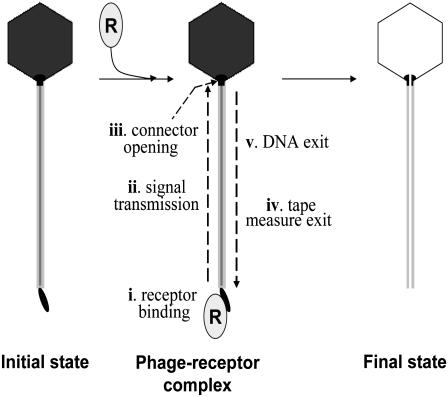FIGURE 1.
DNA ejection in phages with a long tail. Mixing bacteriophages with their receptor(s) leads to strong binding of the receptor to the tail extremity distal from the phage head (step i), generating a sequence of molecular events that culminate in DNA release: (ii) a signal is transmitted along the helical tail structure to the head-to-tail connector; (iii) the connector opens; (iv) the tape measure protein that occupies the tail interior is released from the tail structure; and (v) the DNA moves down the connector and tail central channel to exit the phage particle. Theoretically any of these individual steps can control DNA ejection.

